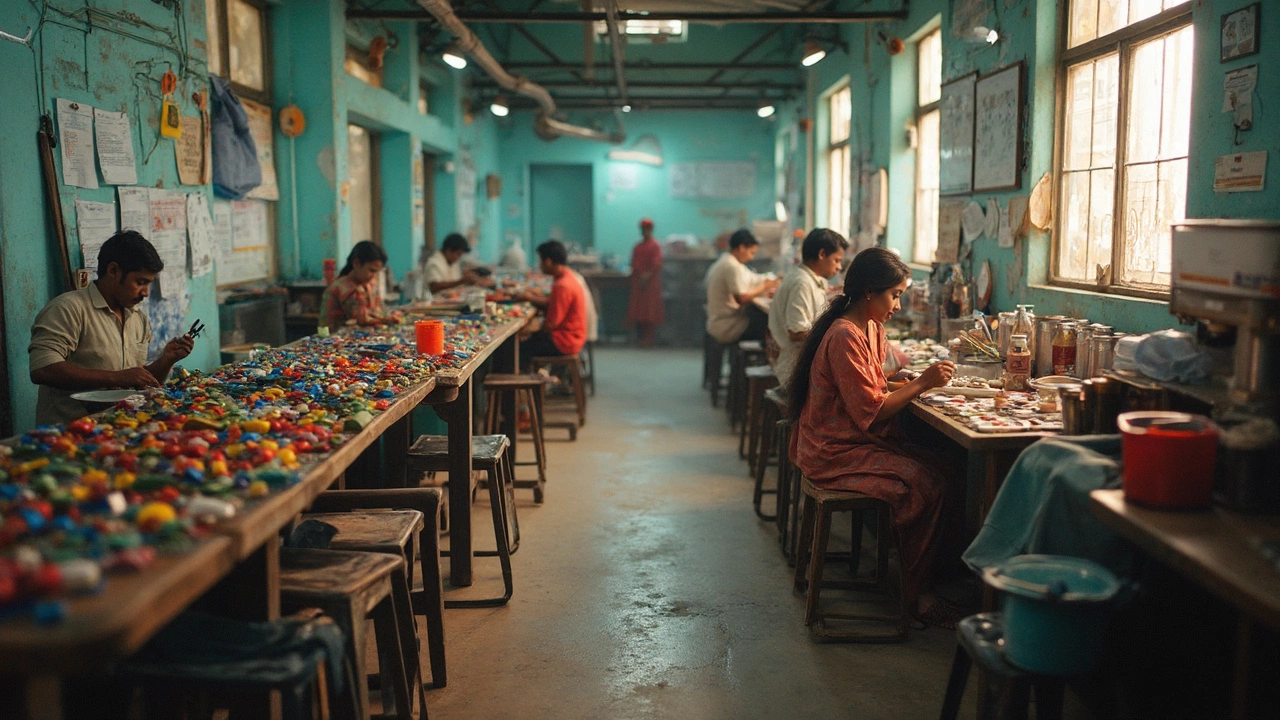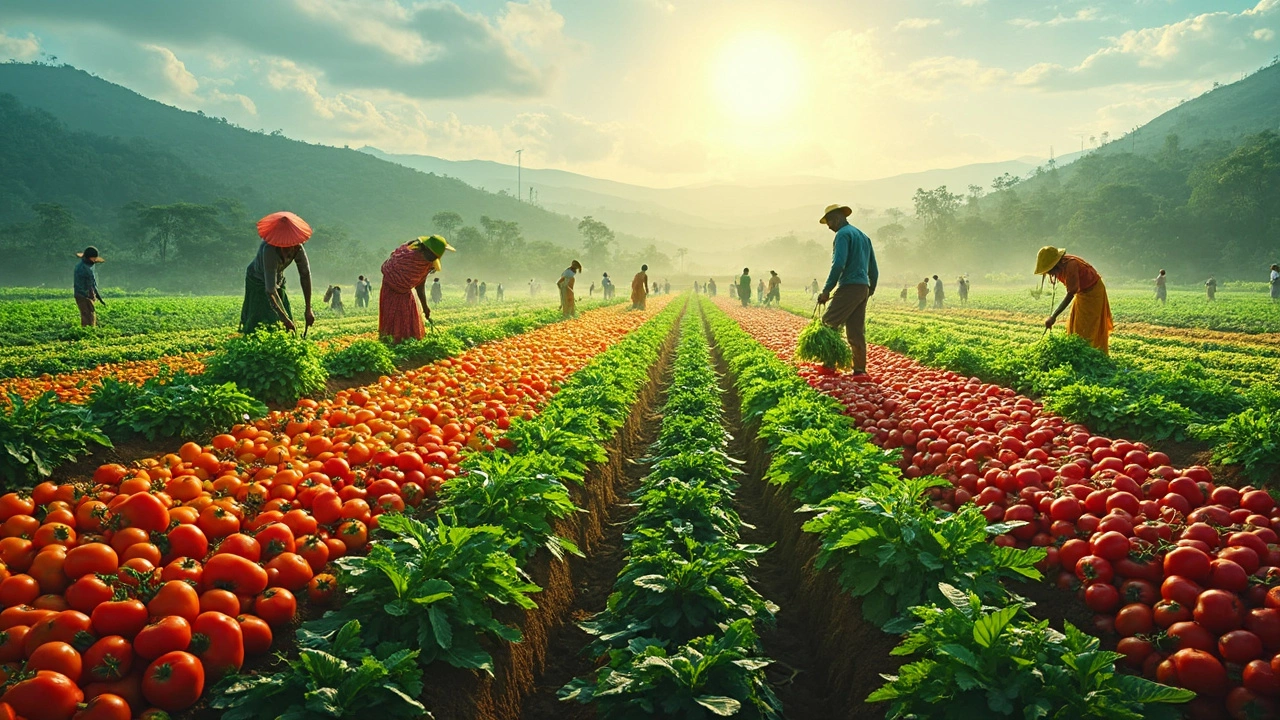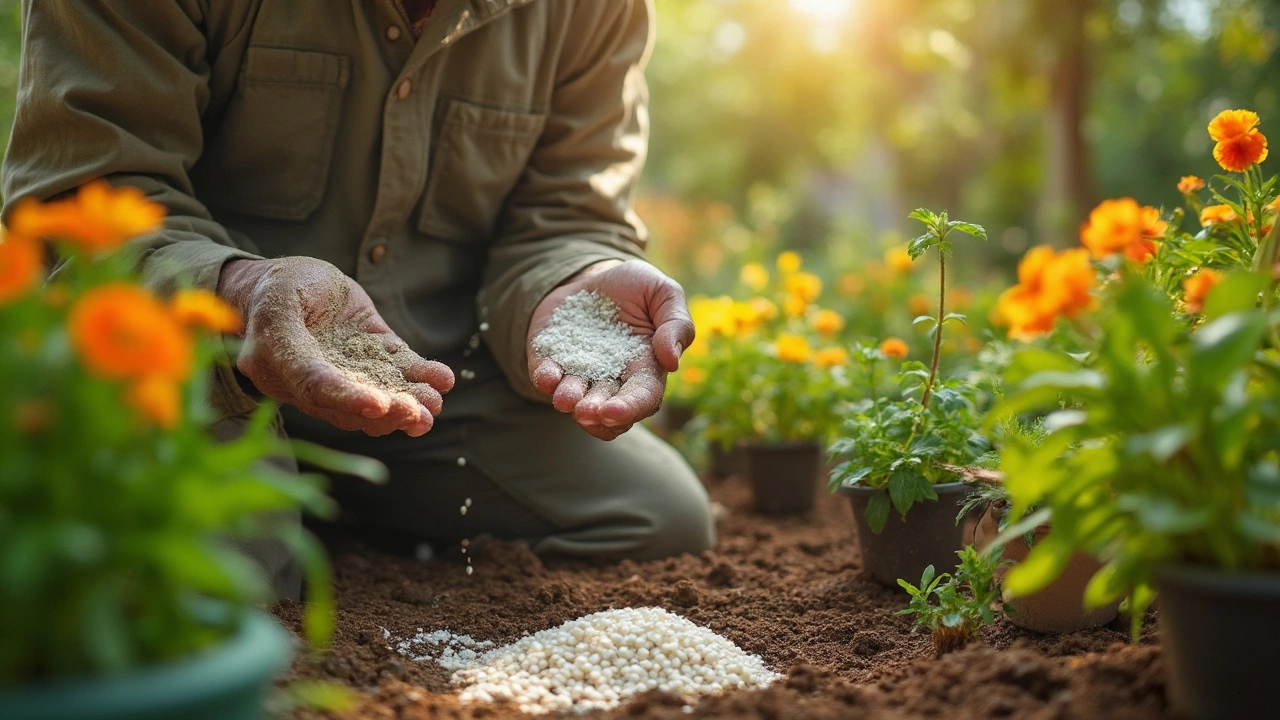Which Vegetable Grow Fast in India? Quick Picks for Your Kitchen Garden
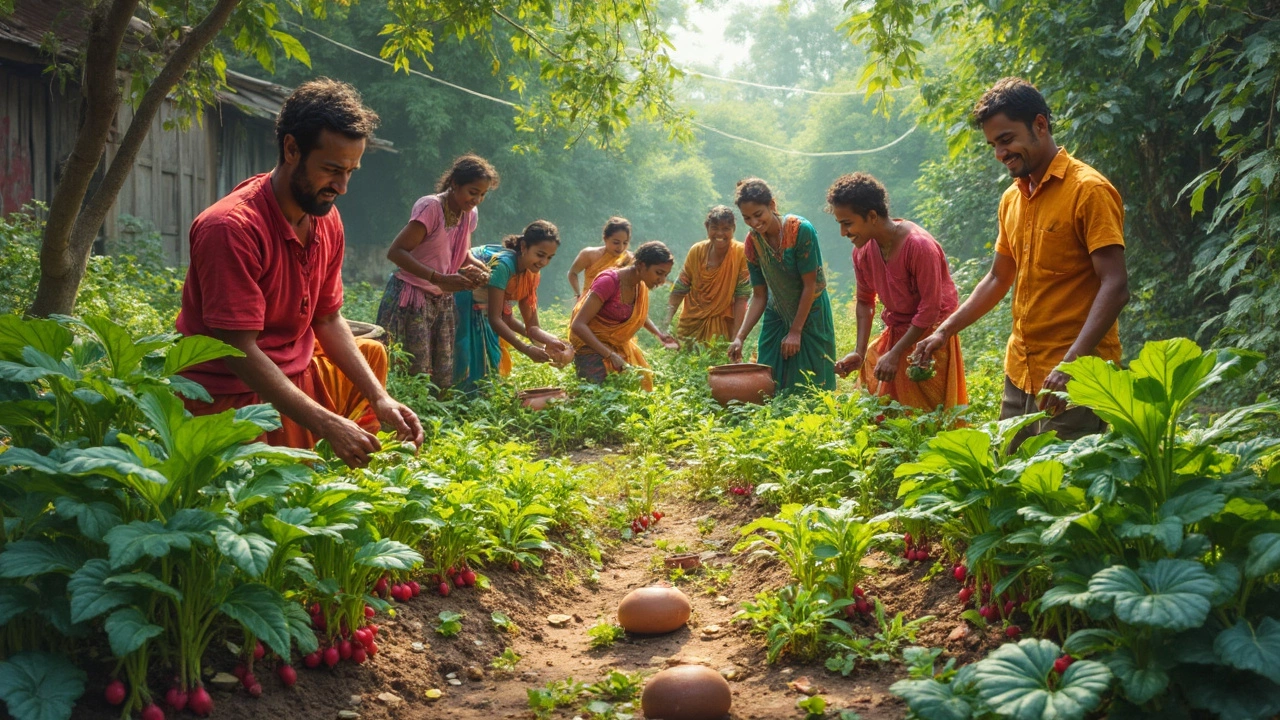
Ever feel like everything in the garden world demands patience? Try fast-growing veggies, and you could be harvesting leafy greens or juicy radishes before your neighbor's tomatoes even decide to flower.
In India, with our warm climate and crazy mix of rain and sun, some vegetables just zoom from seed to salad. You could sow seeds on Sunday and see tiny leaves by the next weekend. Makes you want to check the garden twice a day, right?
Why wait for months when you can have results in weeks? Whether you’ve got a big backyard or a balcony with a couple of pots, these quick growers mean less waiting, less stress, and more crunch on your plate. Let’s get down to the nitty-gritty and see which vegetables race to harvest and how you can make them grow even faster.
- Why Fast-Growing Vegetables Are a Game-Changer
- Top Fast-Growing Vegetables for Indian Gardens
- Planting Tips for Speedy Growth
- Secrets for Getting Bigger Harvests
- How to Keep The Momentum All Year
Why Fast-Growing Vegetables Are a Game-Changer
If you’ve ever tried gardening and lost interest because results took ages, you’re not alone. Here’s where fast growing vegetables step in and make gardening actually fun, especially in India where quick returns can give everyone a little dopamine hit.
The biggest perk? You get food on your plate in 20-45 days—no endless waiting. Spinach, radish, and coriander shoot up super quickly, so even school kids can stay interested. This also means mistakes don’t cost much. If your first try fails, you re-sow in no time and get another shot. Your plate (and confidence) stays full.
These veggies are also a great starter for beginners or anyone with a busy schedule. No need to remember complicated care routines or weather worries. Just keep them watered and you’ll see results faster than with slower veggies like brinjal or capsicum.
People who eat fresh veggies are less likely to rely on chemical-heavy market produce. Fast harvests mean more homegrown, chemical-free salads and sabjis on your table, and less last-minute sprints to the sabziwallah. Plus, it’s way cheaper than buying fresh greens every other day—seeds for mustard leaves or lady’s finger can cost less than a packet of chips.
Curious how these veggies compare for time? Check out this quick look:
| Vegetable | Harvest Time (Days) |
|---|---|
| Radish | 25-30 |
| Spinach | 20-30 |
| Coriander | 25-40 |
| Amaranthus | 25-30 |
Whether you're low on space, patience, or cash, fast-growing veggies put you in control. With the right choices, you could harvest almost every week, turning even a tiny balcony garden into a fresh food factory.
Top Fast-Growing Vegetables for Indian Gardens
If you want a fast growing vegetables list that actually works for India, don’t just copy what someone in Europe or America is doing. Our heat, sudden rain, and changing seasons mean some veggies are practically built for speed here. Here are the champs that shoot up and give quick results:
- Radish (Mooli): This one is almost like cheating. You can pull out crunchy, peppery roots in just 25 to 30 days from sowing. Even in small pots, radish does well, and you get both roots and edible leaves.
- Spinach (Palak): Sow a handful of seeds, keep them moist, and you might get your first harvest in 30 days. It grows fast even if you just water it every two days, especially in partial shade during the scorching summer.
- Fenugreek (Methi): You can snip the soft leaves as microgreens in 12-15 days or wait just a little longer for fuller plants. This is perfect for anyone who’s impatient to see green in their pots.
- Amaranth (Chaulai): This leafy green is a powerhouse in terms of speed. It’s ready to harvest in about 25-30 days. No fancy tools needed—just a bit of patchy soil and some regular water.
- Mustard greens (Sarson): These leaves pop up quickly—about 25 days for tender greens. You can sow these almost any time except peak winter in North India.
- Okra (Bhindi): Not as quick as leafy greens, but you’ll still start picking tender pods in about 40 to 50 days after sowing. Okra loves the Indian summer heat, so no fuss if the mercury rises.
- Coriander (Dhania): This one’s tricky only because Indian heat can bolt it to seed, but with enough water and some shade, you’ll snip fresh leaves in under a month.
Check out the average time these quick harvest veggies take to reach your kitchen:
| Vegetable | Days to Harvest |
|---|---|
| Radish | 25-30 |
| Spinach | 30-35 |
| Fenugreek | 12-20 (for baby greens) |
| Amaranth | 25-30 |
| Mustard greens | 25-30 |
| Okra | 40-50 |
| Coriander | 25-30 |
You don’t need fancy soil mixes, high-end pots, or garden gadgets to get these vegetables started. A sunny spot, regular watering, and basic compost will kick things off. Mix a combo of these to keep your kitchen garden always in action. Whenever you pluck one lot, sow the next row straight away. That’s how Indian homes keep the fresh harvests rolling without a break.
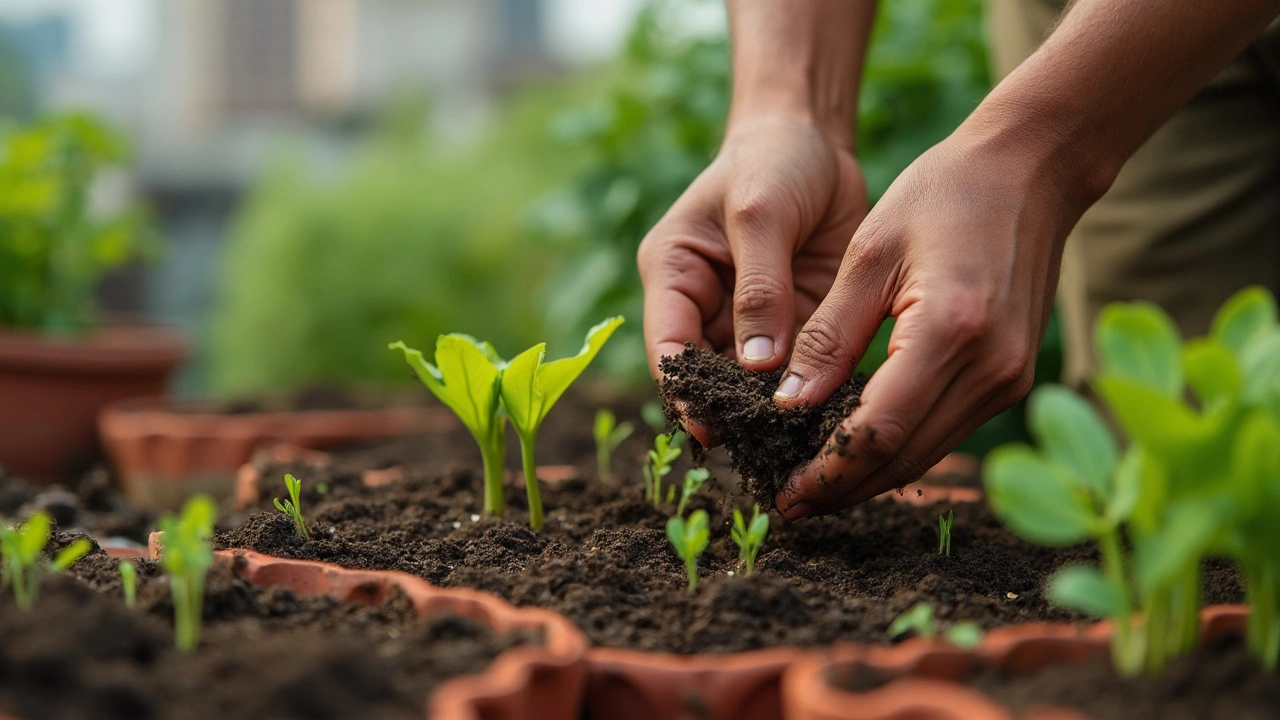
Planting Tips for Speedy Growth
If you want your fast growing vegetables to beat the clock in India, you need to set them up for success from day one. Some folks toss a few seeds and hope for the best, but a little prep can shave days off your waiting time.
First off, always use fresh seeds. Seeds can lose their power to sprout quickly if they’re old. For most veggies, buy seeds that are packed for the current season. Check the packet date when you buy—it really matters for a quick harvest.
Soil needs some love, too. Sandy loam or well-composted soil drains well and makes roots grow faster. If your soil is heavy clay, loosen it up with some organic compost or cocopeat. You want it crumbly—a place roots can zip through, not wrestle with.
Next is sunlight. No shortcuts here. Place your pots or beds where they get at least six hours of sun, even more if you’re in the northern plains. Leafy greens like spinach stretch tall in shady patches, but they take longer to harvest. Get them basking in the sun for the biggest boost.
Stick to shallow planting for fast growers, usually not more than 1 cm deep for seeds like radish and spinach. Deeper means more work for the seed to reach the light, slowing everything down. After sowing, give the bed a good misting—not a flood. Young plants hate soggy feet.
Here’s a quick breakdown for some of the fastest veggies:
| Vegetable | Days to Germinate | First Harvest (Days) |
|---|---|---|
| Radish | 3-5 | 22-30 |
| Spinach | 5-7 | 25-30 |
| Fenugreek (Methi) | 3-5 | 18-22 (as microgreens) |
| Amaranthus (Chaulai) | 4-6 | 25-30 |
Don’t forget regular watering. Speedy veggies like a steady sprinkle, not a heavy soak or dry spells. Missing even two days in hot Indian weather can mess up the whole batch. If possible, water early in the morning when the sun’s not blasting. The plants get a good drink, and there’s less fungus risk.
If you’re planting in pots, bigger is not always better. For kitchen garden veggies, shallow containers between 6-8 inches work well for most leafy greens and radishes. They drain fast and keep things moving.
As a solid bonus tip: pre-soak bigger seeds (like beans or peas) overnight for a jumpstart—they’ll crack and send out roots before they even hit the dirt.
Secrets for Getting Bigger Harvests
Getting a fast growing vegetable is cool, but getting a basket full every single time is even better. You don't need fancy tricks, but you do need to pay attention to the details that actually boost your yield.
Start with sunlight. In India, most quick harvest plants (like spinach, radish, and lettuce) love 5–6 hours of direct sunlight. If your garden is always in the shade, you’re basically short-changing your veggies. Move pots or pick a new corner if needed.
Next, the right soil makes a huge difference. Mix good-quality compost with your soil—aim for it to be loose, crumbly, and rich. This helps seeds sprout quickly and lets roots stretch out, which they need for zippy growth.
“Regular, shallow watering is the key for almost all leafy fast-growing vegetables. You don’t want soggy mud or a bone-dry patch,” says Dr. Tarun Sharma, gardening expert at IARI Delhi.
Don’t skip thinning your seedlings. If you’re growing things like radish or carrots, letting seedlings crowd together means skinny, tiny roots. Pluck out a few, give each plant space, and you’ll see jaw-dropping results in terms of size and shape.
Fertilize with purpose. A mild dose of organic fertilizer (think cow dung slurry or vermicompost tea) every 2 weeks keeps your kitchen garden veggies moving fast and strong. Don’t use too much, though, or you’ll get monster leaves and no actual crop.
Watch out for bugs—don’t let pests munch your plants before you even get to taste them. A quick homemade neem spray beats most chemicals and keeps your food clean and safe.
| Veggie | Spacing Needed | Ideal Feed |
|---|---|---|
| Spinach | 10 cm apart | Vermicompost tea |
| Radish | 5 cm apart | Cow dung slurry |
| Lettuce | 12 cm apart | Compost liquid |
Finally, harvest on time. Don’t wait forever thinking things will get even bigger—most fast growing vegetables are tastiest and most tender when picked young. Waiting too long often means tougher veggies that don’t taste great.
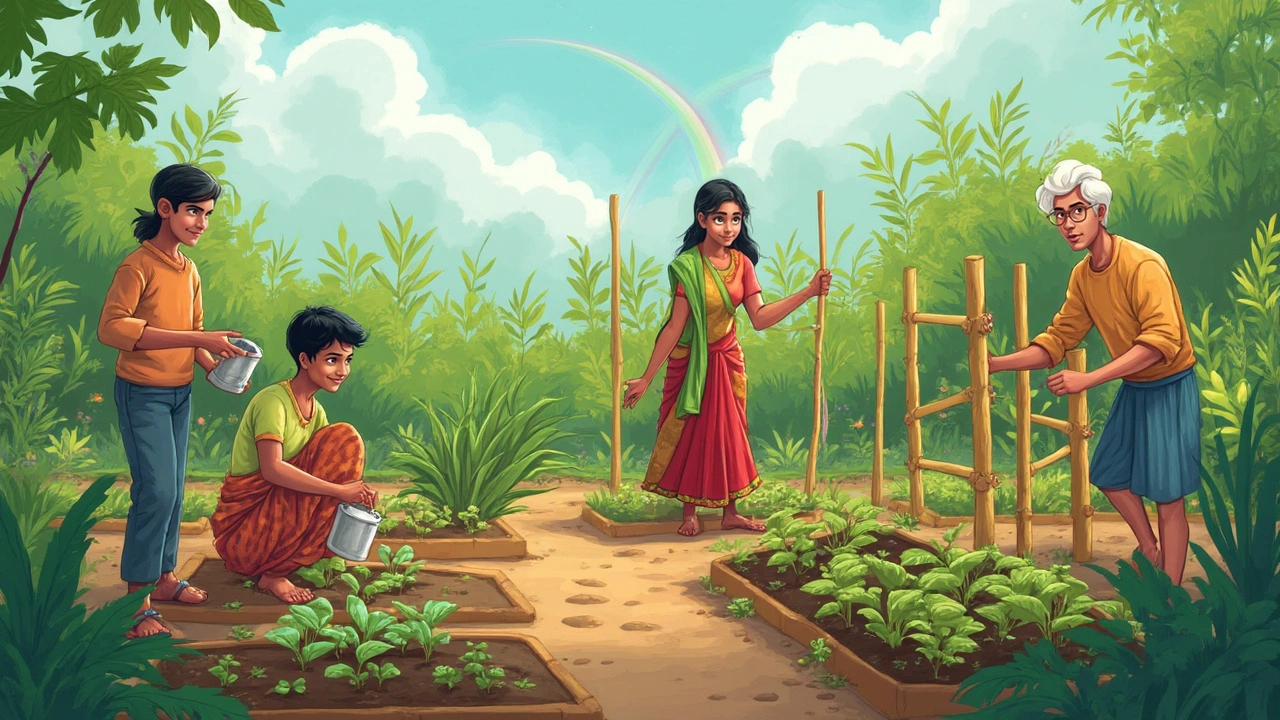
How to Keep The Momentum All Year
Want a fast growing vegetable supply whenever you feel like a fresh plate of greens? You don’t need tons of space or fancy gear—just some planning and a bit of smart timing. In most Indian cities, the weather lets you grow something almost every month if you pick the right crops.
Here’s what really helps regular home gardeners keep their kitchen garden packed through all seasons:
- Stagger your sowing: Don’t plant everything at once. Every couple of weeks, pop in a few more seeds of spinach, lettuce, or radish. That way, you don’t get one big glut and then nothing for weeks.
- Mix quick and slow crops: Planting ultra-fast veggies like spinach alongside slower ones like carrots makes sure at least something is always popping up. Quick growers can be harvested before the slow ones need space.
- Pay attention to the seasons: North India’s winter is perfect for leafy greens and radishes. Hot summers are better for amaranth and okra. If you’re in the south, mild winters mean more choices year-round. A quick look at a sowing calendar can help you plan months ahead.
- Replenish your soil: Quick crops drain the soil fast. After every harvest, mix in some compost or old manure to keep things fertile. Even leftover kitchen scraps (peels, eggshells) make a difference.
- Protect your fast growers: Pests like to snack just as much as you do. Netting, neem spray, or even companion planting with marigold can keep them away, so your easy vegetables don’t get wiped out overnight.
Ever wondered which months are best for what? Check this cheat sheet:
| Month | Veggies to Sow | How Fast? |
|---|---|---|
| January - March | Spinach, beetroot, coriander | 3-5 weeks |
| April - June | Amaranth, okra, cucumber | 4-6 weeks |
| July - September | Fenugreek, radish, beans | 3-4 weeks |
| October - December | Carrot, lettuce, turnip | 4-6 weeks |
If your spot gets too much rain, use raised beds or pots so the roots don’t rot. No sunlight? Try vertical gardening or grow greens indoors on a sunny windowsill. The trick is to keep things moving—pull mature veggies, throw in fresh fast growing vegetables, and feed the soil as you go. Before you know it, you’ll be that person dishing out homegrown salads, all year round.



